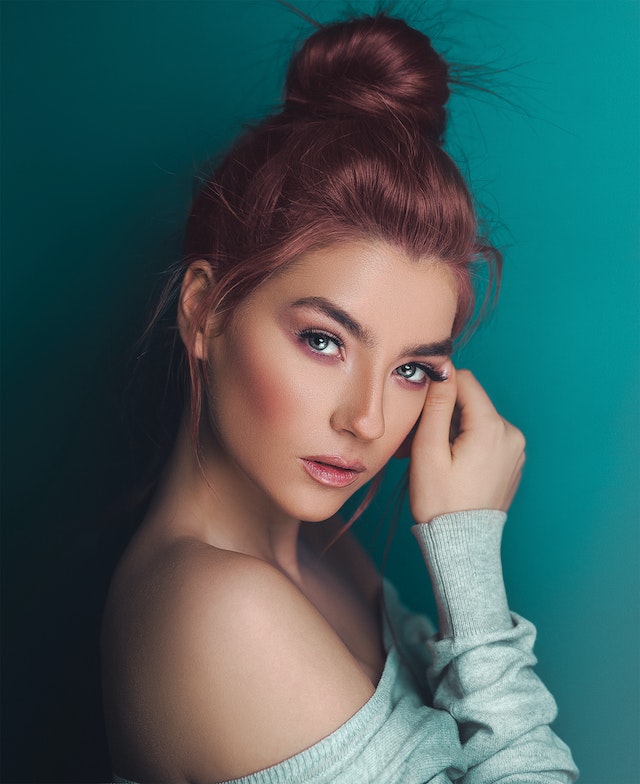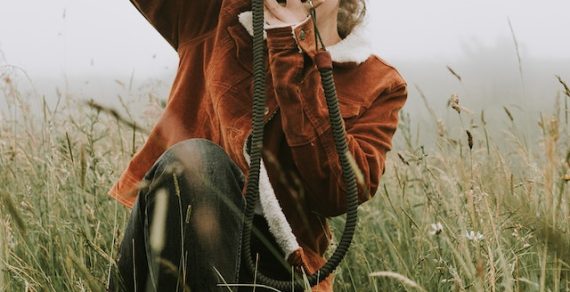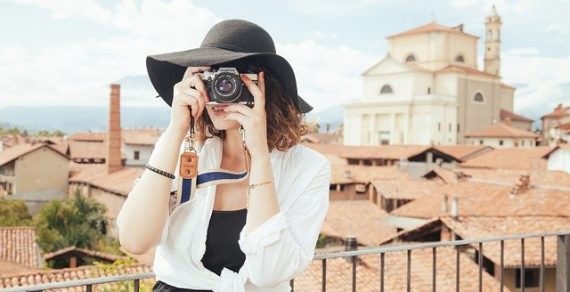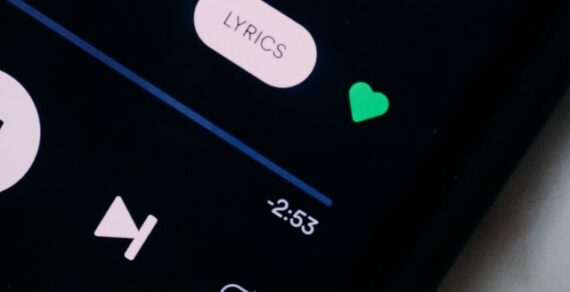The choice of colors and outfits for your photoshoot will depend on various factors including the theme of the shoot, your skin tone, the location, and the mood you want to convey. Below are some general tips for colors and outfit options that tend to look good on camera:
Table of Contents
Colors
- Solid, Neutral Colors: These are always a safe bet. Think blacks, whites, grays, and browns. They are timeless and focus attention on your face.
- Jewel Tones: Emerald green, sapphire blue, ruby red, and amethyst purple are vibrant and can make you pop without overwhelming the photo.
- Pastels: Soft colors like blush pink, mint green, and baby blue are flattering and give a light, airy feel.
- Avoid Neon Colors: They can create color casts on your skin and can be too distracting.
- Avoid Extreme Contrasts: Such as a black shirt with white pants. The camera may have trouble exposing both properly.
- Complementary Colors: If you know the background, pick a color that complements it. For example, a blue top may stand out nicely against a golden, sunset background.
Outfit Options
- Classic and Timeless: Think of a classic white button-down shirt with jeans or a simple black dress. These options are timeless and often photograph well.
- Textures and Layers: Incorporating different textures (like a chunky knit sweater, silk blouse, or a lace dress) adds depth and interest. Layers (like a well-fitted blazer or a scarf) can also add dimension.
- Tailored and Fitted: Clothes that fit well, neither too tight nor too loose, generally look best. Avoid clothes that bunch up when you move or that you have to adjust frequently.
- Avoid Distracting Patterns: As a rule of thumb, avoid clothes with bold, intricate patterns like busy florals or very tight stripes, as they can distract from your face and may create moiré patterns on camera.
- Dress for the Theme/Location: For a beach shoot, flowy dresses or casual shorts and a clean tee might work. For a more formal portrait, a suit or a formal gown may be appropriate.
- Comfort is Key: If you’re uncomfortable, it will show in the photos. Make sure you feel good in whatever you wear.
Additional Tips
- Bring Options: If you can, bring a few different outfits to the shoot. This will give you some flexibility and allow you to change your look partway through.
- Consider Your Skin Tone: Warmer skin tones tend to look great in earthy colors like terracotta, peach, and olive green, while cooler skin tones may be flattered by jewel tones like sapphire or emerald.
- Don’t Forget Accessories: They can add a lot to a shot, but like with clothes, avoid anything too flashy that might distract from your face.
- Prepare Your Outfits in Advance: Make sure they are clean and ironed, and lay them out the night before so you aren’t stressed on the day of your shoot.
Finally, it’s best to have a conversation with your photographer. They can provide direction based on the location, lighting, and their personal style of photography. Plus, they’ve seen what works and what doesn’t through their lens.
Good luck with your photoshoot! I’m sure you’ll look amazing.
Frequently Asked Questions about the Photoshoot
Here are some frequently asked questions (FAQs) about photoshoots, along with the answers:
What should I wear for my photoshoot?
Choose outfits that make you feel comfortable and confident. Solid colors or simple patterns are often best, as they are less distracting than bold prints. Consider the theme and location of the shoot when choosing your outfit. Consult with your photographer beforehand—they may have recommendations based on their style and the shoot’s setting.
How should I prepare for my photoshoot?
Get plenty of rest the night before, stay hydrated, and eat a light meal before the shoot. Prepare your outfits in advance, making sure they are clean and ironed. If the shoot involves makeup, arrive with a clean and moisturized face. Communicate with your photographer before the shoot to clarify the details.
Can I bring props or accessories?
Yes, props and accessories can add personality and depth to your photos. However, it’s best to discuss this with your photographer beforehand to ensure they align with the vision of the shoot.
How long will the photoshoot last?
The duration of a photoshoot can vary significantly, depending on the type of shoot, the number of locations, and the photographer’s style. It’s best to clarify this with your photographer beforehand.
Will the photos be retouched?
Most professional photographers include retouching in their services, but the extent can vary. Some may only make minor adjustments to exposure and color, while others may offer extensive editing. It’s important to clarify this with your photographer before the shoot.
When will I receive the final images?
The time it takes to receive final images can vary from photographer to photographer. Some may deliver a sneak peek within a few days, while full galleries may take weeks. It’s essential to establish this timeline with your photographer beforehand.
How many images will I receive?
The number of images you receive can vary widely between photographers and packages. Always confirm with your photographer before the shoot.
Can I suggest poses or bring examples of photos I like?
Most photographers appreciate when clients have an idea of what they like. Bring examples, but trust your photographer’s expertise and be open to their suggestions during the shoot.
What happens if the weather is bad for an outdoor shoot?
Photographers who often shoot outdoors usually have a backup plan for bad weather, which might include rescheduling or moving to an indoor or covered location. Discuss this with your photographer in advance.
How should I handle hair and makeup?
Some shoots include professional hair and makeup, while others don’t. For those that don’t, it’s generally best to aim for a natural and polished look, unless the theme of the shoot calls for something different. Confirm with your photographer if they have a hair and makeup artist on set or if they have recommendations.
What is the cost of a photoshoot?
The cost of a photoshoot can vary widely based on several factors including location, duration of the shoot, experience of the photographer, and the deliverables (e.g., number of edited photos, prints, etc.). It is essential to clarify this with your photographer and ensure you understand what is included in the price.
Remember that communication with your photographer is key. Prior to your photoshoot, it’s a good idea to have a discussion about your expectations, preferences, and any questions you may have.
Example of photoshoot
Below are examples of different types of photoshoots, each with a brief description and some pointers for how such a shoot might typically be approached:
Portrait Photoshoot
- Description: A portrait photoshoot focuses on capturing the personality and expression of an individual or group of people. These photoshoots can be formal, casual, or styled to convey a particular mood or theme.
- Location: Studio, outdoor settings, or a meaningful location to the subject.
- Outfit Ideas: Classic and timeless attire, neutral or solid colors, clothing that complements the background and lighting.
- Props and Accessories: Minimal, to keep the focus on the subject’s face and expression.
Fashion Photoshoot
- Description: These shoots are focused on showcasing fashion items like clothing, shoes, and accessories. They can take place in a variety of settings and often involve professional models.
- Location: Studio, urban settings, natural landscapes, or themed locations that complement the style of the fashion.
- Outfit Ideas: Fashion-forward and trend-setting outfits; the clothes are the star in these shoots.
- Props and Accessories: Vary based on the theme; can include statement pieces like bold jewelry, hats, or sunglasses.
Engagement/Couples Photoshoot
- Description: A session to capture couples in a romantic and often candid manner. These shoots are popular for engaged couples but are also common for anniversaries or just to capture love and connection.
- Location: Romantic and/or meaningful settings, such as parks, beaches, urban areas, or the place where the couple got engaged.
- Outfit Ideas: Coordinated but not overly matching outfits, comfortable and reflective of the couple’s style.
- Props and Accessories: Engagement ring, handwritten love notes, a meaningful item to the couple.
Family Photoshoot
- Description: These shoots capture family members together and aim to show the connection between them.
- Location: Outdoor parks, family home, studio, or a location meaningful to the family.
- Outfit Ideas: Coordinated colors that aren’t overly matchy-matchy; comfortable clothes for kids.
- Props and Accessories: Minimal, to keep focus on the family; occasional props like a picnic blanket or a family pet.
Product Photography Shoot
- Description: This type of photoshoot is focused on showcasing a product’s features. The goal is to make the product look appealing to potential customers.
- Location: Typically in a studio with a controlled environment. For lifestyle product shots, an appropriate setting where the product might be used.
- Outfit Ideas: If models are used, their outfits should complement the product and not distract from it.
- Props and Accessories: Props that help to demonstrate the use of the product or enhance its features without overshadowing it.
Corporate Headshot/Branding Photoshoot
- Description: Professional photos that are often used on company websites, LinkedIn profiles, and other professional contexts.
- Location: Studio or corporate environment, sometimes outdoors for a more relaxed look.
- Outfit Ideas: Professional attire that aligns with the industry standard; neutral colors are often a good choice.
- Props and Accessories: For branding shots beyond headshots, props relevant to the profession (e.g., laptop, tools of the trade).
Each of these photoshoots will have its own unique style, requirements, and approach. Always communicate with your photographer to understand their approach and to align your expectations for the shoot.

Summary
A photoshoot is a creative and professional process that involves collaboration between the photographer and the subject(s) to capture visually appealing and meaningful images. Whether it is a portrait session, a fashion shoot, a product photography session, or any other type of photoshoot, preparation and communication are key to ensuring success. Here are some key takeaways:
Preparation is Paramount:
Prior to the shoot, it is important for the subject(s) to prepare their outfits, props, and themselves mentally and physically. For photographers, preparation involves planning the shoot’s concept, scouting locations, and ensuring all equipment is ready.
Communication is Key:
Effective communication between the photographer and the subject(s) is essential. It’s important to discuss the vision for the shoot, expectations, and any specific requirements or requests well in advance.
Style and Environment Matter:
The location, clothing, and styling play a significant role in the overall feel and success of the photoshoot. Choosing the right environment and style that aligns with the shoot’s purpose is essential.
Flexibility Can Yield Great Results:
While planning is crucial, remaining flexible during the shoot can lead to spontaneous and authentic images. Sometimes the best shots are unplanned.
Professionalism is Essential:
Whether you are the photographer or the subject, maintaining a professional demeanor, respecting each other’s time and creative process, and being punctual and prepared are key aspects that contribute to a successful photoshoot.
Post-Production is Part of the Process:
After the shoot, the photographer’s work continues with selecting, editing, and retouching images. This is where the photos are fine-tuned and the photographer’s unique style is often most evident.
Celebrating and Sharing the Final Product:
Once the final images are delivered, they become a lasting memory, a piece of portfolio work, or a vital part of a branding strategy. These images are meant to be celebrated, shared, and enjoyed.
A photoshoot is more than just clicking a camera; it’s an art form that combines vision, preparation, technical skill, and collaboration to produce images that tell a story, convey a message, or capture a moment in time. Whether you are in front of or behind the camera. The Rise of the Engagement Photo Shoot can be a rewarding and enriching experience.




